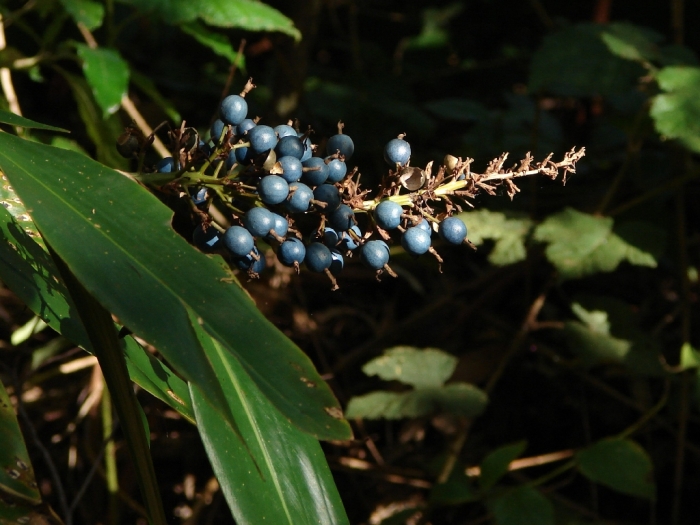Native Ginger
(Alpinia caerulea)
Native Ginger (Alpinia caerulea)
/
/

Tatters
CC BY 2.0
Image By:
Tatters
Recorded By:
Copyright:
CC BY 2.0
Copyright Notice:
Photo by: Tatters | License Type: CC BY 2.0 | License URL: https://creativecommons.org/licenses/by/2.0/ | Uploader: Tatters | Publisher: Flickr |





















Estimated Native Range
Summary
Alpinia caerulea, commonly known as Native Ginger, is an evergreen perennial herb that originates from rainforests and the understorey of open eucalypt forests in Eastern Australia and the coastal forests of New Guinea. It can grow up to 3 meters in height and is characterized by its lush, broad, green leaves and striking blue fruit. The plant produces white to pale blue flowers during spring and summer, which are subtly showy and give way to the distinctive blue berries. The foliage remains attractive throughout the year, making it a popular ornamental plant.
Native Ginger is valued for its versatility in the garden, serving as an understory plant in tropical and subtropical gardens, and for its culinary uses. The young shoots and roots are used as a ginger substitute, adding a mild gingery flavor to dishes, while the roots offer a more earthy, resinous taste. The blue fruit and seeds can be dried and ground to use as a spice or to add sourness and red color to herbal teas. This plant thrives in part shade to full shade, requiring medium amounts of water and well-drained soil. It is relatively low-maintenance, but gardeners should be aware that it can spread if conditions are ideal, potentially becoming invasive in some settings.CC BY-SA 4.0
Native Ginger is valued for its versatility in the garden, serving as an understory plant in tropical and subtropical gardens, and for its culinary uses. The young shoots and roots are used as a ginger substitute, adding a mild gingery flavor to dishes, while the roots offer a more earthy, resinous taste. The blue fruit and seeds can be dried and ground to use as a spice or to add sourness and red color to herbal teas. This plant thrives in part shade to full shade, requiring medium amounts of water and well-drained soil. It is relatively low-maintenance, but gardeners should be aware that it can spread if conditions are ideal, potentially becoming invasive in some settings.CC BY-SA 4.0
Plant Description
- Plant Type: Herb
- Height: 6-7.5 feet
- Width: 3-6 feet
- Growth Rate: Moderate
- Flower Color: White
- Flowering Season: Spring, Summer
- Leaf Retention: Evergreen
Growth Requirements
- Sun: Part Shade, Full Shade
- Water: Medium
- Drainage: Medium
Common Uses
Bee Garden, Butterfly Garden, Low Maintenance, Street Planting
Natural Habitat
Rainforests and the understorey of open eucalypt forests in Eastern Australia and the coastal forests of New Guinea
Other Names
Common Names: Red Back Ginger
Scientific Names: , Alpinia caerulea, Hellenia caerulea,
GBIF Accepted Name: Alpinia caerulea (R.Br.) Benth.